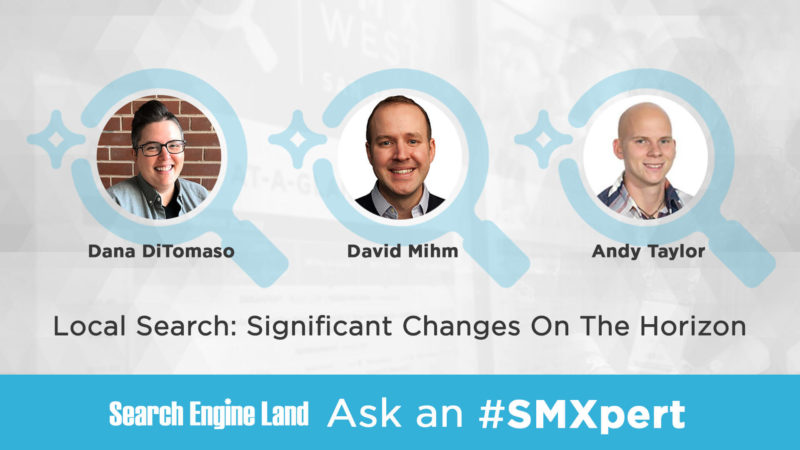 The Ask an SMXpert series continues the question-and-answer (Q&A) segment held during sessions at SMX Advanced 2018 in Seattle.
The Ask an SMXpert series continues the question-and-answer (Q&A) segment held during sessions at SMX Advanced 2018 in Seattle.
Today’s Q&A is from the Local Search: Significant Changes on the Horizon session with Andy Taylor, Dana DiTomaso and David Mihm and an introduction from moderator Chris Sherman.

Chris Sherman
I’ve been programming search conferences for nearly two decades. In all that time, I’ve never moderated a session where the speakers discussed such disruptive forces about to be unleashed in the local search arena. This was an absolutely fascinating session — and even better, though the changes our speakers described are going to be huge, they also provided creative approaches to dealing with the new landscape and demonstrated how you can actually thrive going forward.
If your marketing has a local focus, you’ll do well to spend some serious time with this latest SMXpert installment.
David Mihm
Question: Does Google now track actual store visits to rank local searches?
David: I’ve suggested that Google has been shifting its algorithm to focus on more democratic, transactional signals of popularity — like clicks to call, clicks for driving directions and store visit information — to rank local businesses for over a year now. But we don’t actually know if Google actually uses any of it in its ranking algorithm.
Unlike links, citations or reviews, there really isn’t a great way to test this as a ranking signal, since only Google has location data from Android phone owners and iOS users of Google Maps.
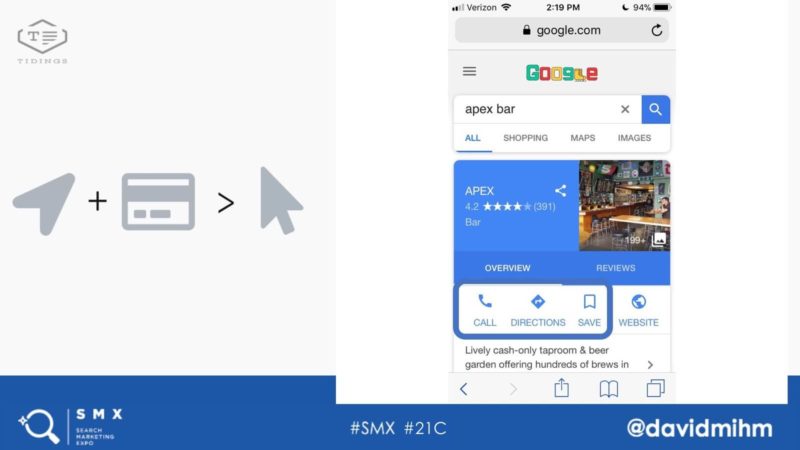
But the difficulty in testing this signal is also one of its virtues; it’s darn near impossible to manipulate. Links, citations and reviews are easily faked or bought. Store visits, on the other hand, are about the most foolproof ranking signal to assess the actual popularity of a given business. If a competitor has a knowledge panel showing, and you don’t, that is probably helping them rank well.
Question: If you work with an old-school SEO that still thinks it’s all about the links, how do you help her/him move from traditional SEO tactics?
David: Links still contribute to local rankings, but they’re far from the Holy Grail they are in traditional organic search.

According to research from Local SEO Guide, the first factor related to links doesn’t show up until #12.

Factors 2 through 11 all relate to reviews. Individual factors shouldn’t be taken as gospel, but directionally, they should signal to your colleagues that there’s a completely different algorithm at work when it comes to local.
And if the old-school SEO needs more proof, have her/him look at the top 10 businesses in any reasonably competitive category of the Google Maps Finder. Run the websites listed for each business through your favorite link tool. I’ll bet your guy a beer there’s no readily identifiable correlation between domain authority and local rankings.
Question: How are you tracking rankings when proximity and personalization plays an extremely large and prominent role in the search results on maps? Most rank tracking tools search from a specific location in a market but can’t emulate all potential locations, which means that where you “rank” with a tool may be misleading.
David: I’d argue your energy and your budget will be better spent on other local tactics than tracking where you rank. Personalization (a part of a group of factors that relate to engagement) is playing a much bigger role, and Google’s now highlighting this explicitly in its products. If you or your clients insist on tracking, Whitespark’s product is highly recommended.
For several years now, rankings have been an indicator of SEO performance across the entire SEO landscape, not just in local search. And in local, a more powerful directional indicator of SEO performance now comes from Google My Business (GMB) Insights in the form of discovery searches and clicks to call and driving directions by ZIP code. Google provides this freely via the GMB dashboard for individual locations, and they’re working to make roll-up reporting easier for enterprise brands. With a little creativity, you should be able to extrapolate a directional indicator of organic rankings for discovery phrases by individual ZIP code.
Question: We offer services in a particular local area but do not have a physical location. How do we approach local SEO for this?
David: Google’s answer would be to buy ads, and increasingly, that’s my answer as well. But there are a couple of organic tactics that might work.
First, you need to have content on your website that showcases your services in the area where you lack a physical location. The best way to achieve this typically is a case studies section with a unique page for each major market or neighborhood you serve. Having before-and-after photos, videos of your staff at the job site and testimonials from the customers you’ve serviced is an engaging and effective way to build content that shows Google you operate in these markets.
The second is a little more difficult to execute but relates to reviews. If you look at the Local SEO Guide’s study above, you’ll see “new reviews with the City” is the third-ranking criteria. So if a significant number of your reviews contain the name of the city in which you actually performed the service, there’s a reasonable chance that location would rank in a local pack in the adjacent market.
You can’t force your customers to use any certain phrase in a review, but you might be able to prime your customers’ instincts about what to write about by asking “where did we perform the service,” prior to your review request.
Question: Google local is now offering websites; should we do this, or will it compete with an existing domain?
David: You’re probably referring to Google Sites.
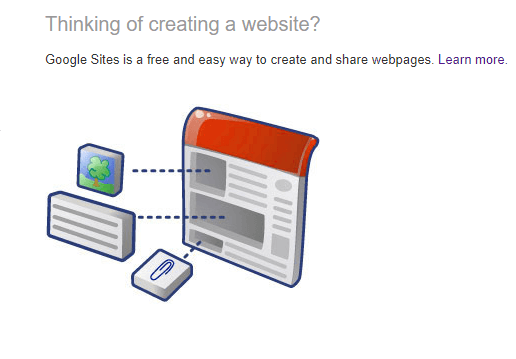
Most of this growth has been in the developing world and not the US market. Google Sites are really are meant to be primary websites, so they probably aren’t something most businesses who are savvy enough to be reading SearchEngineLand should consider. But to answer your question, they would compete with your existing domain.
Being able to optimize pages on Google Sites is hard, and, while there may eventually be beneficial tie-ins to Google My Business or other Google products, currently, there are not. Quite frankly, there are much better choices on which to build your first website, such as WordPress or Squarespace.
SMXInsights from David
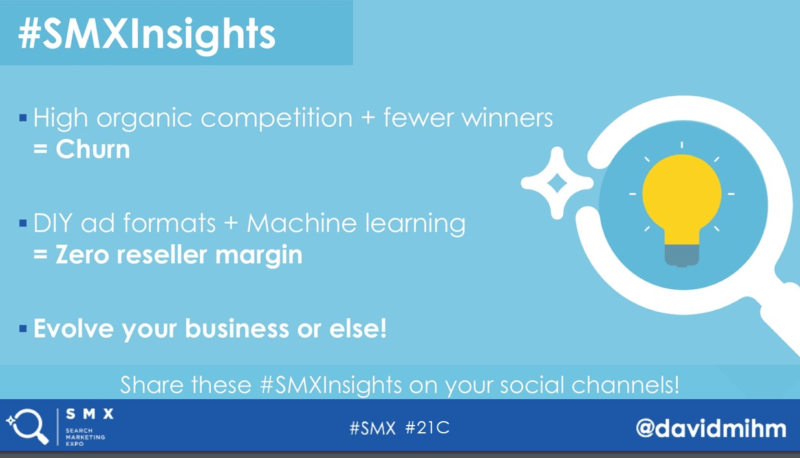
Dana Di Tomaso
Question: Does Google now track actual store visits to rank local searches?
Dana: Google is probably tracking that by using location data. It isn’t something we have access to, but the Google Beacon project shows real promise in opening up this avenue for us.
Question: Google local is now offering websites; should we do this, or will it compete with an existing domain?
Dana: Only do this if you don’t already have a website. Otherwise, there’s no need to create a second website.
Question: We have noticed a rise in queries for “near me ” instead of naming a specific location in a query. Is this something you are seeing, and does it change the way you address local optimization?
Dana: We’re also seeing an increase in these “near me” searches, and it does extremely well on AdWords, particularly with phone call conversions. How to optimize for this? Well, John Mueller has said to avoid doing this, but it certainly still works.

If you’re wondering how to optimize for it, try writing a page title (tag) like “Is there a chiropractor near me in Seattle?” No guarantees it will work, but it’s worth a test, especially since big players such as TripAdvisor continue to rank well for “near me” searches.
Question: Do you have a recommended number of categories to use in your listings? Is there more prominence put on the first category used and secondary influence for the other categories?
Dana: Pick the categories that make the most sense for what you do and stop there. Sometimes that’s just one category, and sometimes there are a few options. Don’t spam or pick categories you don’t offer on your website. As for your first category, that should be the most important to you or comprises the biggest part of your business.
Question: How are you tracking rankings when proximity and personalization plays an extremely large and prominent role in the search results on maps? Most rank tracking tools search from a specific location in a market but can’t emulate all potential locations, which means where you “rank” with a tool may be misleading.
Dana: We use STAT Search Analytics for tracking, and while we can track by ZIP code, I agree that sometimes you want to be more specific. In that case, I’d recommend Mobile Moxie’s Mobile Search Simulator.
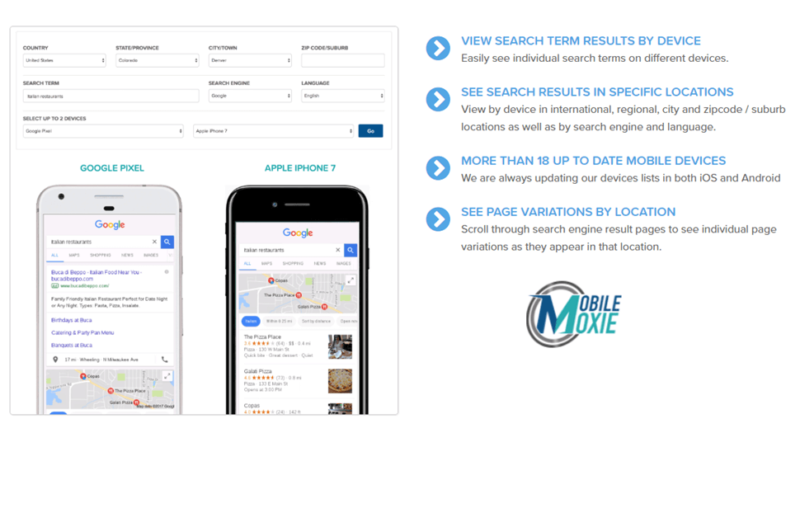
Try their Bulk Locations upload (currently in Beta), you can search by very specific locations, down to individual street addresses. I’d recommend looking at overall ZIP code results in STAT and then do further diagnosis in Mobile Moxie if you’re not seeing as many visitors from a specific ZIP code that you should be, based on your rankings.
Question: Our business location moved last year, and the company that was at our location never removed/changed their address. When you search our address, their name still comes up. I have tried the “suggesting an edit” multiple times to remove them from the listing, to no avail. Any suggestions?
Dana: Try claiming the location! Even if they claimed it, there is a process where you can get control of a location if the owner doesn’t respond within a certain time frame. Once you have it, you can change the address for them.
Question: What are your thoughts on using virtual offices or coworking spaces to establish an address? Does this still work (contrary to Google’s recommendations)?
Dana: There’s a big difference between virtual offices and coworking spaces. Coworking spaces are totally legitimate offices; in fact, I started my company in a coworking space! Virtual offices, on the other hand, are a no-go. But don’t rent a space in a coworking office just because you want to have a better proximity for the local pack. Your office must be staffed during business hours.
SMXInsights from Dana
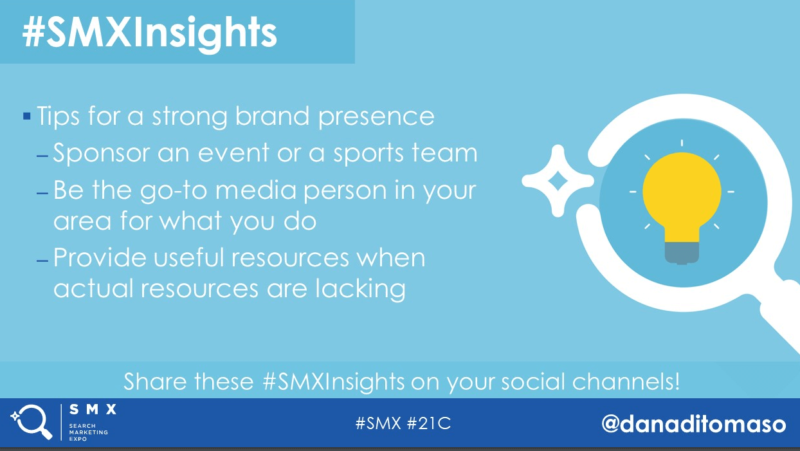
Andy Taylor
Question: Are you already using Smart Bidding for LIA? How is this working?
Andy: We have not used Smart Bidding, a Google strategy to optimize for conversions or conversion value, for local inventory ads (LIA) at Merkle (my employer) as we deploy a proprietary bidding system. That said, I imagine a similar issue plays out with Smart Bidding as with other bidding strategies when LIA is split into its own campaign versus allowed to run in a traditional shopping campaign with LIAs enabled.
Google has stated that when LIA and traditional product listing ads (PLA) formats are running from the same campaign, it takes important variables like location, device, query intent and time of day into consideration in determining whether to show a local ad or a traditional ad. However, when shopping campaigns are broken up into separate campaigns for LIAs and PLAs, Google confirmed that it prioritizes the bid in determining which ad format to show.
Generally speaking, any time Google says that it will “prioritize the bid,” that tends to mean that clicks will be more specific, as the bid is being weighted more heavily than quality factors. Indeed, that appears to be the case when it comes to managing LIA and PLA in separate campaigns, as one advertiser that went from a combined campaign structure to separate campaigns saw LIA cost per click growth skyrocket, despite similar bids for both campaigns.
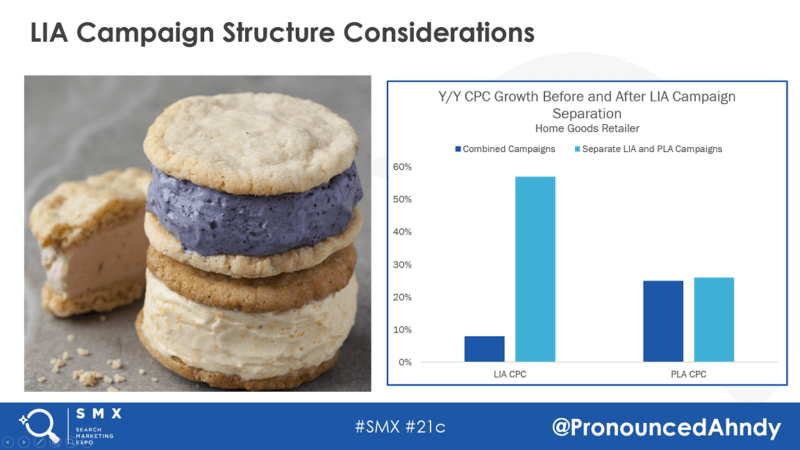
Thus, it appears there is a bit of an advantage to allowing LIAs and PLAs to run from the same campaign. This is likely true for campaigns deploying Smart Bidding as well.
Question: Do you have a recommended number of categories to use in your listings? Is there more prominence put on the first category used and secondary influence for the other categories?
Andy: Google is currently testing new keyword-less local campaigns that started rolling out in late February 2018 to select AdWords accounts, and one observation is that essentially all traffic is coming from queries that include some variation of the GMB business category.
For example, if the category is “clothing store,” nearly all queries driving traffic through these new campaigns include some reference to a variation of “clothing store.”
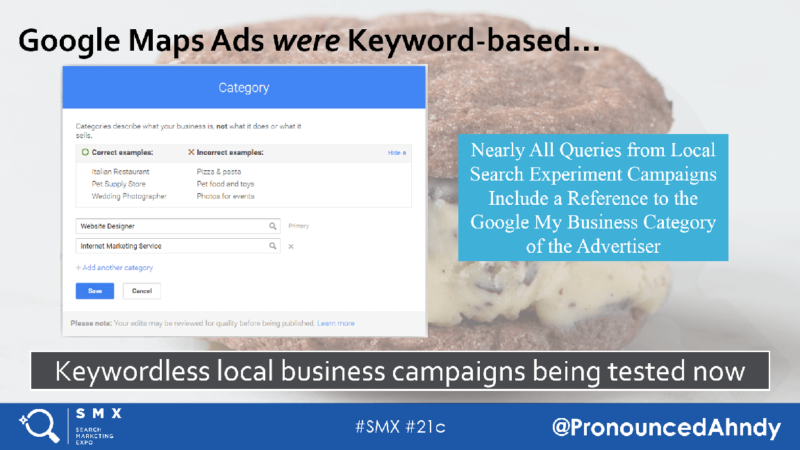
As such, business categories now also play a role in paid placements. At this time, it appears that Google is primarily using the first category in determining relevant queries, and additional categories don’t seem to be driving traffic. While this is certainly not the only consideration to take into account when determining which categories to use and in which order, and Google could quickly change how categories are used in this way, it is a relatively new factor to incorporate into GMB category optimization strategy.
Question: We have noticed a rise in queries for “near me” instead of naming a specific location in a query. Is this something you are seeing, and does it change the way you address local optimization?
Andy: This is certainly something I’ve seen. With the number of queries that include large US city names actually declining over the past couple of years, it seems users increasingly expect their devices to detect location without including location information directly in the query.

Additionally, Google released research last year showing searchers are becoming less likely to include location qualifiers like ZIP code or city in queries and they’re also becoming less likely to include variations of “near me.”

With searchers becoming increasingly comfortable with their devices’ ability to detect location, as well as search engines’ ability to determine when they’re looking for a local business, local queries will likely continue to include fewer and fewer location cues.
It’s a good sign then that Google is increasingly able to assign US AdWords traffic to ZIP codes, the most granular location type reported on in the “most specific location” in AdWords geographic reports. With fewer location indicators included directly in the query, Google will need to be able to effectively determine a location within a tight radius in order to produce relevant results.

SMXInsights from Andy
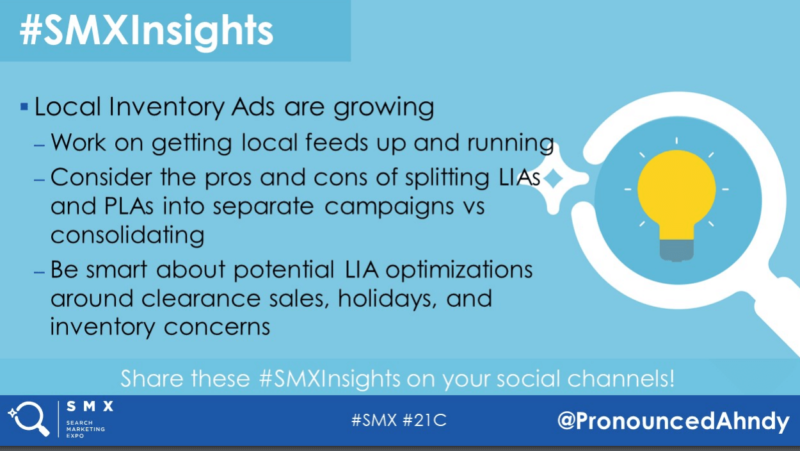
Want to see more? Our ever-growing library of SMXpert articles offers an in-depth look at tips, tactics and strategies from our SMXperts. Check it out!
Contributing authors are invited to create content for Search Engine Land and are chosen for their expertise and contribution to the search community. Our contributors work under the oversight of the editorial staff and contributions are checked for quality and relevance to our readers. The opinions they express are their own.



